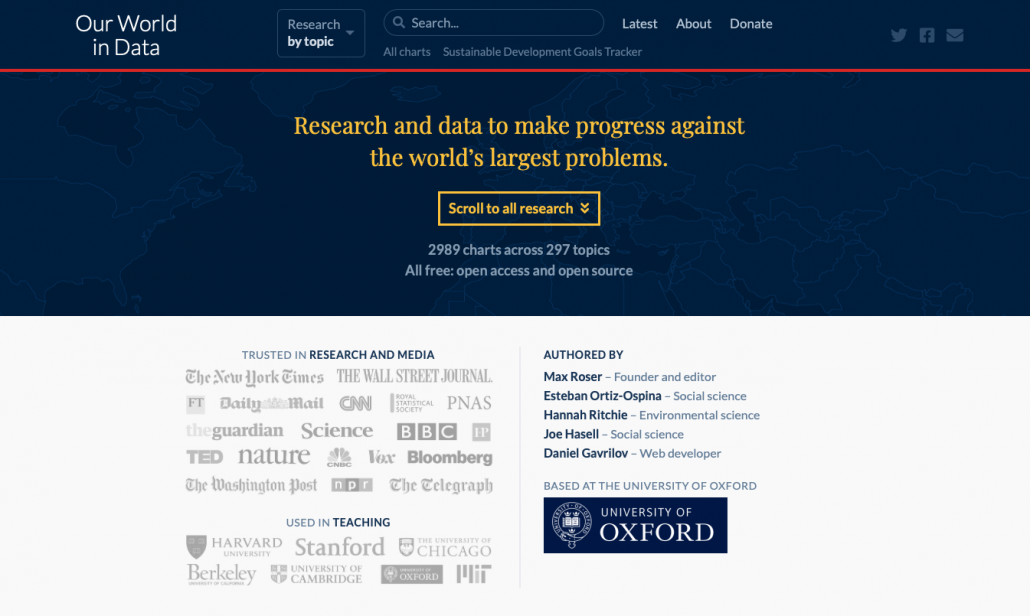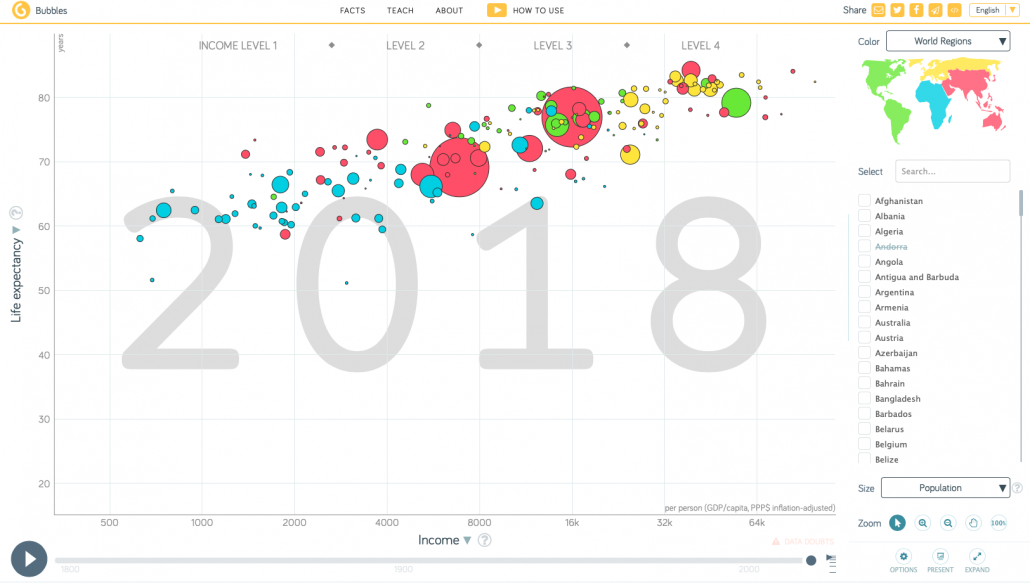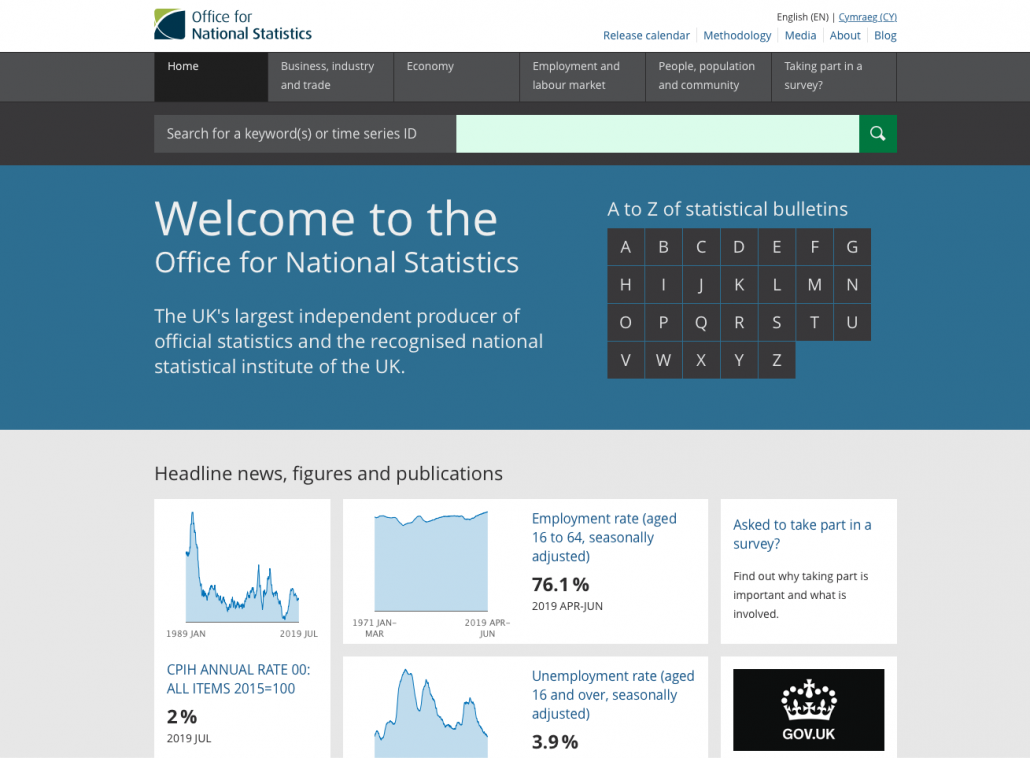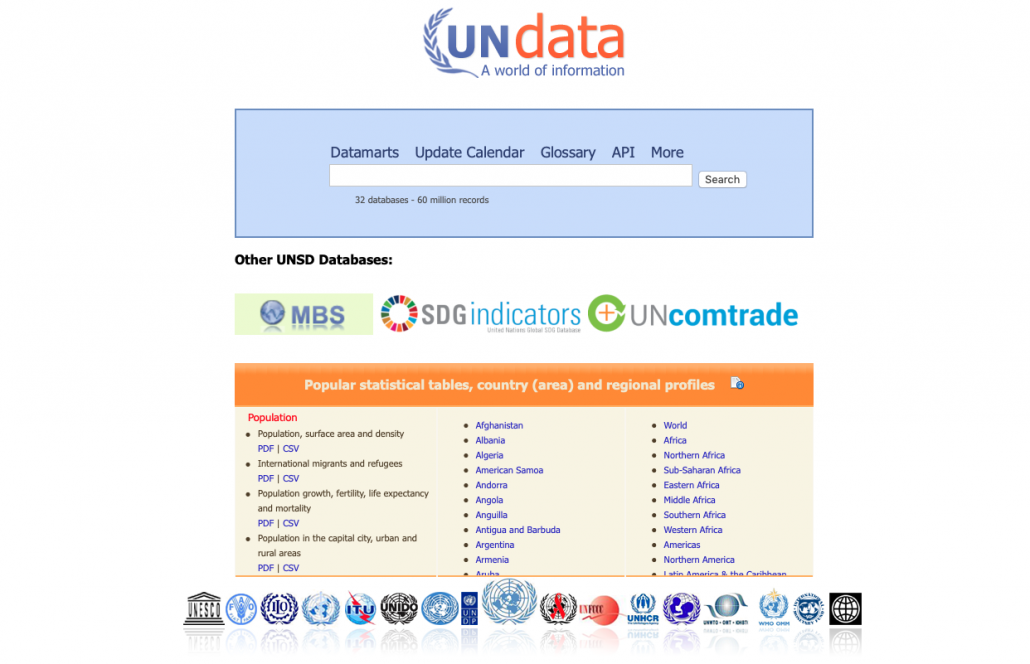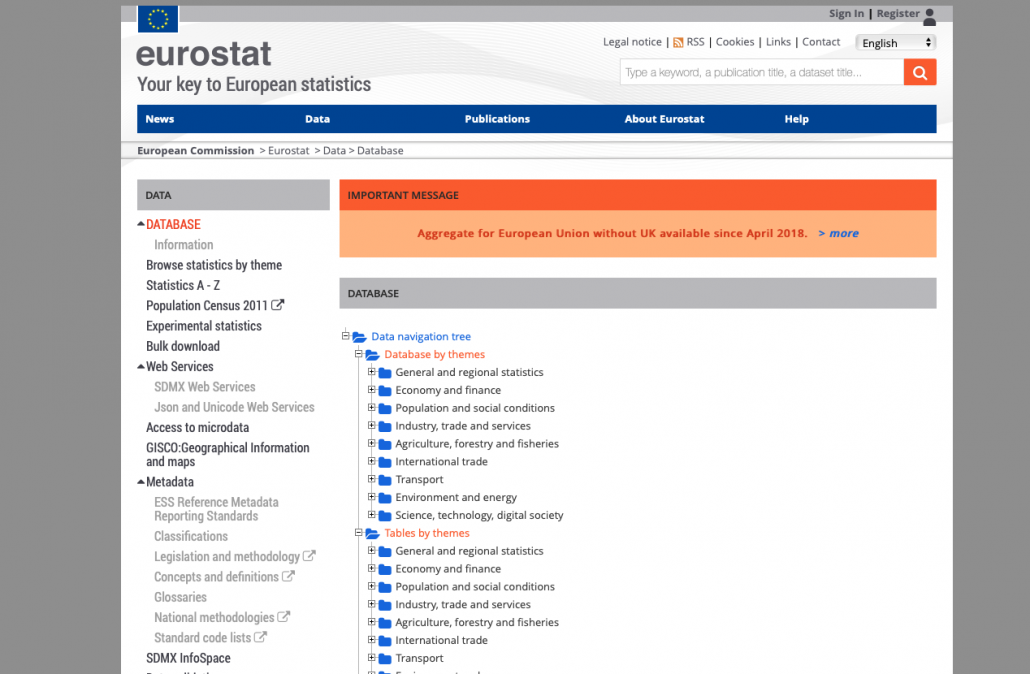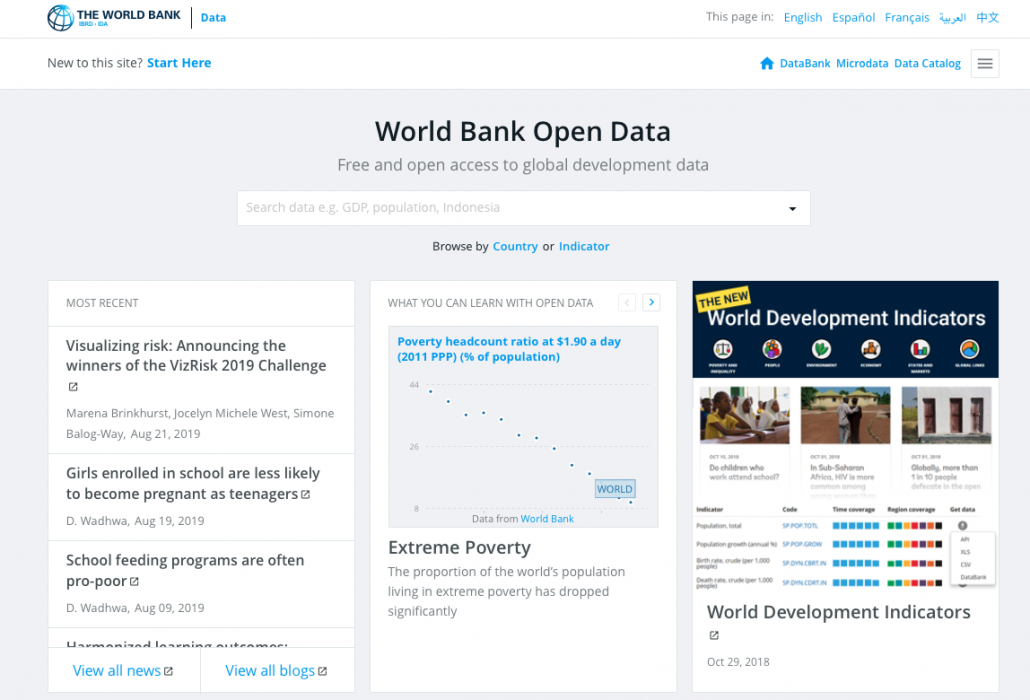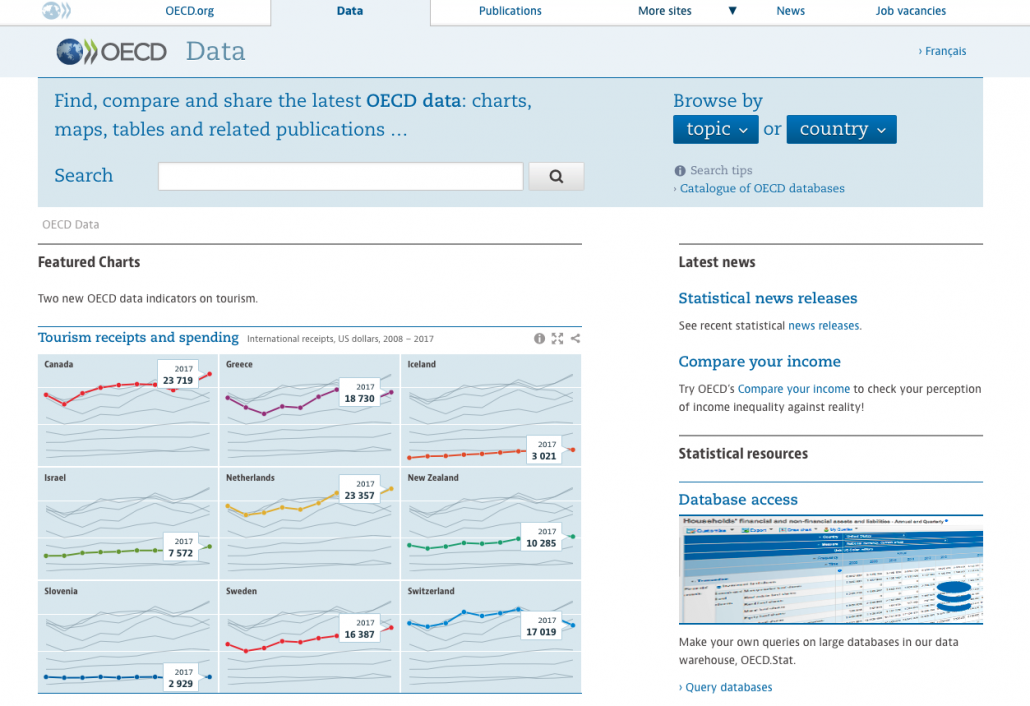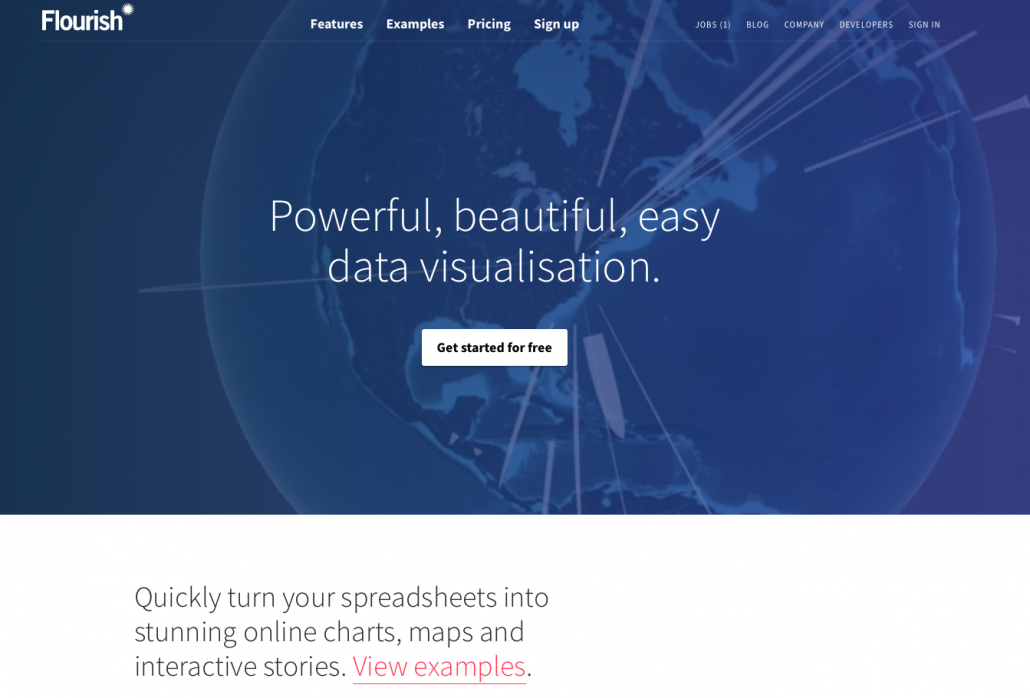10 amazing sites for geographical data
We’ve pulled tother a collection of fantastic websites that provide a range of geographical data. The websites are in no particular order, but each is worth exploring.
If you have any more data driven sites to recommend please leave a comment below!
Our World in Data
Research and interactive data visualisations to understand the world’s largest problems by Oxford University. What makes this site so good is the dialogue that accompanies the beautifully presented data.
Gap Minder Tools
Gapminder is an independent Swedish foundation with no political, religious or economic affiliations. Gapminder is a fact tank, not a think tank. Gapminder fights devastating misconceptions about global development. Reliable data can be presented in a range of eye-catching ways.
https://www.gapminder.org/tools
Office for National Statistics
The UK’s largest independent producer of official statistics and its recognised national statistical institute.
UN Data
A comprehensive collection of data from the United Nations.
http://data.un.org/Default.aspx
Eurostat
Eurostat is the statistical office of the European Union situated in Luxembourg. Its mission is to provide high-quality statistics for Europe.
https://ec.europa.eu/eurostat/data/database
The World Factbook
The World Factbook provides information on the history, people and society, government, economy, energy, geography, communications, transportation, military, and transnational issues for 267 world entities.
https://www.cia.gov/library/publications/the-world-factbook/
World Health Observatory
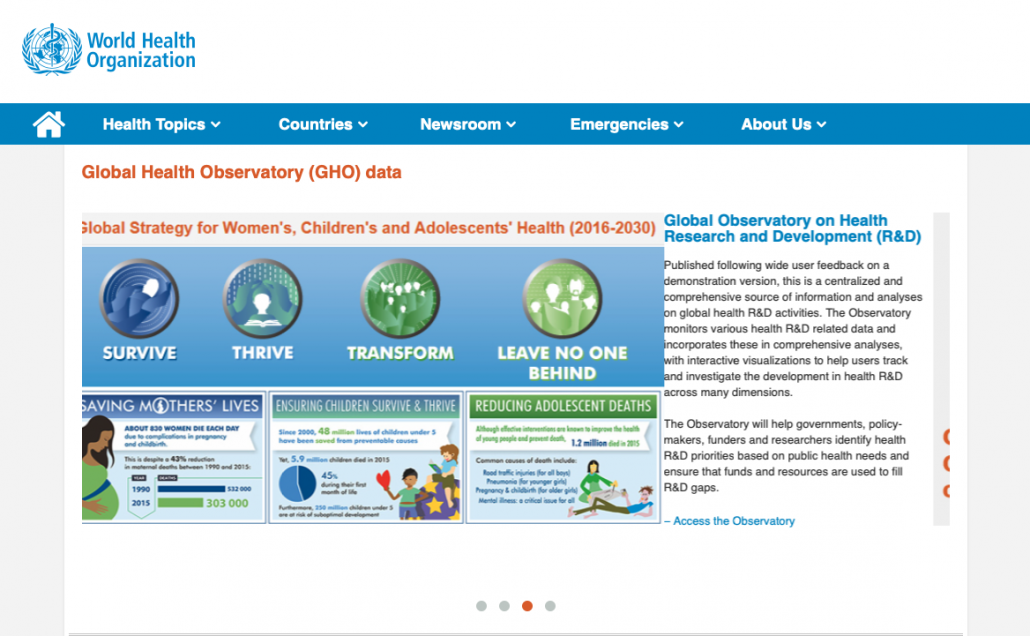
World Health Organisation
Global statistics based on health-related issues by the World Health Organisation
World Bank Open Data
A comprehensive data catalogue covering a range of development indicators.
A wide range of data including agriculture, development, energy and the environment.
Flourish Studio
Flourish studio does not provide data, but does enable you to create stunning data visualisations. Take a look at my first attempt using Flourish.
A technique for graph interpretation exam questions using TEA
Guest blogger Adam McAllister (@McAllister_Geog), geography teacher of two years, shares a strategy for interpreting graphs.
Despite my young years, it was clear that when working with data and graphs in lessons, children struggled with interpretation. Both children in key stage 3 and those studying GCSE struggled with graph interpretation. As a result, I started to use and embed TEA (trend, example, and anomaly). A simple but effective strategy. However, was it as simple as I first thought?
Well, the answer was perhaps not. Trying to embed new strategies with children can be rather challenging as I found out! It is all about routine, routine, routine. Children have to be trained to do the things that we expect. It is just like riding a bike. You have to learn/be taught first before removing the stabilisers – and much confidence!
T stands for trend. Children need to look for a trend or pattern in a data set or graph. There must be a trend to identify, otherwise, the exam question would be rather pointless in my eyes. Trends that I would ask children to look for would be the basic increase/decrease for one, but whether the data/graph fluctuates. Other things that I would ‘train’ them to look for would be whether the rate of decrease and/or increase is rapid, slow, constant.
E stands for example. At this stage of TEA, I would ask children to look for an example or evidence that backs up the first initial point that have identified. Whether this is quoting the rate of increase, the years at which there is a decrease. It is also vitally important to embed that if a graph or data figure has a specific unit, this should also be quoted in any given answer.
A stands for anomaly. This one may be a little trickier. At times there may not be an anomaly. It is okay that we and the children we teach accept this. If an anomaly is identified, this needs to be placed into the answer. Examples would include a decrease/increase or significant change in the data or figure. An anomaly could be as simple as something that does not fit the trend you earlier identified! Again, this should be supported with an example or evidence.
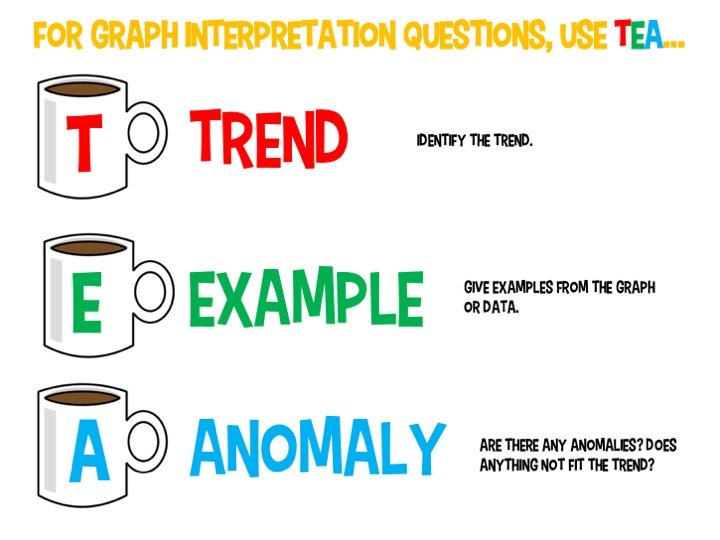
TEA Graphs in Geography
Working on this strategy at my current school has seen improvement of answers given, in relation to data and graph interpretation questions. It is still a work in progress currently, but I am delighted with the strides taken forward!
Adam McAllister
August 2019
Internet Geography is offering a platform for guest bloggers for this academic year. Got a teaching strategy, interest or anything geographical you’d like to share? Please contact us. We’re unable to offer a financial award but we’ll send you a little treat in the post.

